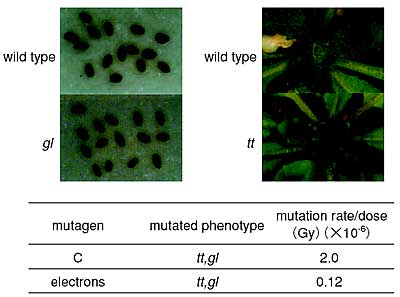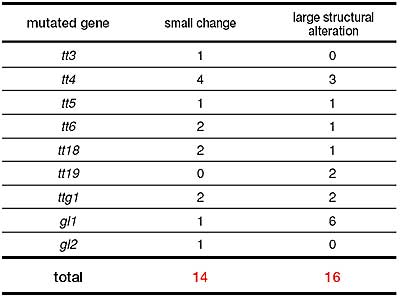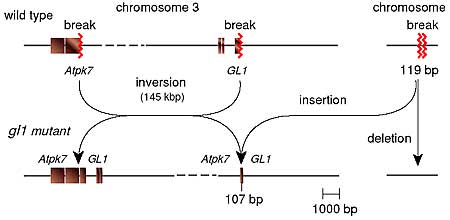Owing to its nature of depositing a large amount of energy along the beam track, ion beams may induce mutations qualitatively different from those induced by other mutagens. Indeed, we have isolated novel plant resources, such as UV-resistant Arabidopsis and the flower colour mutants of Chrysanthemum by ion beam irradiation. However, it was not clear whether mutations induced by ion beams are actually unique.
Arabidopsis thaliana, which is a model plant for genetic and DNA analysis, was irradiated with C ions (220 MeV, 150 Gy) to investigate the mutation rate and the nature of the induced mutations. We have found that the mutation rate obtained with C ions was 17-fold higher than that with conventional low-LET radiation (i.e., electrons) (Fig. 9-10), and that compared with electrons, C ions are more likely to induce "large structural alterations", such as deletions, inversions, translocations, and insertions (Figs. 9-11,
9-12).
These results imply that ion beams are a useful and effective mutagen. We believe that our work provides a basis for the use of ion beam mutagenesis for plant genetics and crop breeding. |



